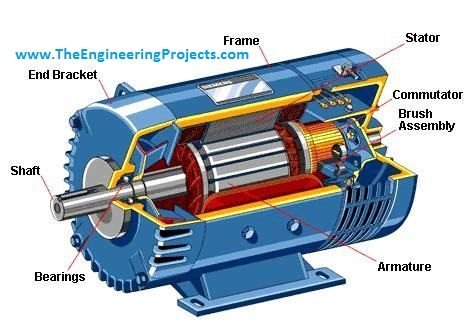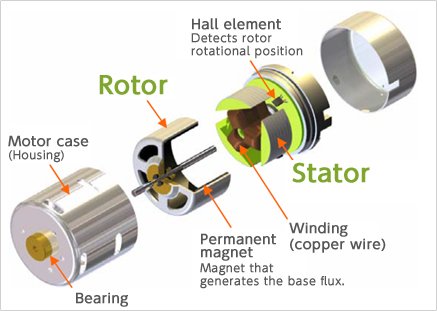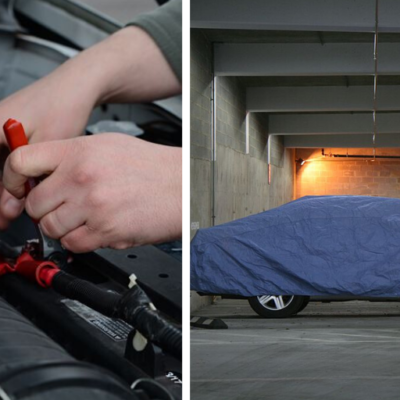Brushless Motors Vs Brushed Motors
Electric current is transformed into rotational motion by both Brushless Motors Vs Brushed Motors. Since brushless motors were first developed in the 1960s, brushed motors have been in use for more than 100 years. However, they have spread in popularity since they were first introduced. Nevertheless, brushed motors are still in use today. Here is a synopsis of each of these motors’ characteristics and operations to help you comprehend how they individually work.

Brushed Motors
These are the only characteristics that distinguish brushed motors from BLDC motors;
These are the earliest DC electric motors, which produce mechanical energy using a mechanical commutator and a DC current. As the name implies, these electric motors connect the rotor assembly to the DC power supply using brushes. The commutator rings, output shaft, and armature are all found in the rotor assembly, which is a part of the motor.
The housing features a stator with a magnetic field on the outside. Either a stationary electromagnet coil or a permanent magnet produces this magnetic field. Magnetic field lines continually pass through the rotor assembly and have north and south poles.

The generated field from the armature repels the field from the stator because the rotor assembly is free to revolve. Shaft rotation will result from this. The armature and stator field currents are typically proportionate to this rotation. However, modifying these currents will result in varied output properties.
Various varieties of brushed motors are available to fit different situations, and they are easy to regulate and repair. Additionally, brushed motors can function with AC much as universal motors, expanding their range of possible applications. However, brushed motors have been around for a while. Even though they are less sophisticated, they nonetheless offer the best power for a variety of applications.
Brushless Motors
BLDC motors are another name for brushless motors. They differ from bruised motors in the following ways;
Instead of using brushes, these motors take advantage of the stator’s permanent magnetic field, which is typically found in brushed motors. It then arranges it in the shape of actual magnets all around the rotor. The electromagnetic coils used in brushless motors are often arranged in pairs around the rotor. An electrical control system is used to electronically turn on and off these magnets.
The pair pole of the rotor attracts the permanent poles of the rotor when the electromagnetic coils are activated, turning it to its aligned position. The operator will cause the rotor to rotate at the desired frequency if the stator poles are turned on and off successively. Mechanical energy will be produced as a result.
Three phase induction motors with a specific level of complexity that improves their working qualities are brushless motors. But this also means that they will be more expensive. Because of their electrical controllers, they are more sophisticated than brushed motors on practically all fronts.
Due to the lack of brushes, brushless motors require little maintenance. They survive longer than brushed motors as a result. However, these motors need pricey repairs when they need to be fixed. And when there needs to be one, it’s because it’s complicated.

These motors’ torque response to speed is displayed by their speed curve. The speed curve for DC motors is typically linear. This indicates that the variation in their torque is linear with their speed. The speed curves of brushless motors are remarkably linear. This is due to the fact that its electrical commutation allows for more accurate speed control.
The rated power of motors—which may be expressed in kW or HP—relates to their power density. For applications like washing machines or power tools that require high speeds in compact containers, the power density value is typically helpful. However, brushed motors have a better power density than brushed motors since they offer a faster speed that you can maintain successfully.
While brushed motors have a variety of speed ranges, BLDC motors have a higher and better speed range due to electrical commutation.
Operators must be aware of when to replace brushes in brushed motors because they have a brush life. Their lifespan is drastically shortened as a result. On the other side, brushless motors have a substantially longer lifespan because they don’t need routine maintenance or experience friction problems. Additionally, there is no chance of sparking, therefore there are fewer chances for failure.
Even while brushed motors perform the job, it is clear from all the variations that they aren’t the best option. On the other hand, despite their expensive cost, Brushless motors provide excellent service. In addition to being less expensive, brushed motors don’t need electrical control systems. Therefore, the ideal choice will be brushless motors, which will offer all the advantages. You will, however, have to pay more for all of these.
Both of these motors provide priceless benefits for a variety of applications. But before purchasing one, you must be aware of the advantages and risks involved as well as your financial situation.
Also, see
2022 Toyota Innova Hycross Breaks Cover In Indonesia
Follow us on Instagram – here



